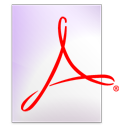 Most viewed - eBook Library Most viewed - eBook Library |

shapeofsuffering.pdfThe Shape of Suffering: A Study of Dependent Co-arising1253 viewsThe Buddha devoted his life, after his Awakening, to showing a reliable way to the end of stress. In summarizing the whole of his teaching, he said: “Both formerly & now, it is only stress that I describe, and the cessation of stress.†SN 22:86. These were the issues he taught for 45 years. In some cases, he would give a succinct explanation of stress and its cessation. In others, he would explain them in more detail. His most detailed explanation is called dependent co-arising—Paticca Samuppada. This detailed summary of the causal factors leading up to stress shows why the experience of suffering and stress can be so bewildering, for the interaction among these factors can be very complex. The body of this book is devoted to explaining these factors and their interactions, to show how they can provide focus to a path of practice leading to the ending of stress.
|
|

DP_Ajiv_Bibliography.pdfAjivatthamaka Sila Bibliography1250 viewsAjivatthamaka Sila (Eight Precepts with Right Livelihood as the Eighth) Bibliography. A bibliography for Ajivatthamaka Sila (Eight Precepts with Right Livelihood as the Eighth and Buddhist Precepts.
|
|

KENDAL_BOOK.pdfIntroducing Buddhism1243 viewsIntroducing Buddhism was originally published by The Buddhist Society London in 1988, to accompany the Buddhist Society’s Introducing Buddhism Course, on which Jacquetta Gomes Bodhicarini Upasika Jayasili was one of the teachers. Introducing Buddhism has subsequently been published by different organisations in different countries.
|
|

noblestrategy.pdfNoble Strategy: Essays of the Buddhist Path1225 viewsThe essays in this book present views on basic elements in the Buddhist path—the attitudes, concepts, and practices that lead to total freedom for the mind. If the views are right, they themselves form a part of the path. Thus, in learning how to make best use of these essays, it’s important to understand how views function in bringing about freedom.
|
|

refuge.pdfRefuge: An Introduction to the Buddha, Dhamma & Sangha1214 viewsThe refuges in Buddhism - both on the internal and on the external levels - are the Buddha, Dhamma, and Sangha, also known as the Triple Gem. They are called gems both because they are valuable and because, in ancient times, gems were believed to have protective powers. The Triple Gem outdoes other gems in this respect because its protective powers can be put to the test and can lead further than those of any physical gem, all the way to absolute freedom from uncertainties of the realm of ageing, illness, and death.
|
|

MHRGKNJHG.pdfMYÅŒ-HÅŒ-REN-GE-KYÅŒ: NYO-RAI-JU-RYÅŒ-HON-GE (JÅ«-Roku) 妙法蓮è¯ç¶“: 如來壽é‡å“第åå…1209 viewsWonderful-Dharma-Lotus-Flower-Sutra:
Thus-come [Tathagata's] Long-life [Eternal] Nature.
|
|

Sandokai.pdfSAN-DÅŒ-KAI å‚åŒå¥‘ 1197 viewsInequality-Equality [in] Harmony.
|
|

Eight_Precepts_in_Burmese_Buddhism.pdfEight Precepts in Burmese Buddhism1195 viewsWritings on the subject of Ajivatthamaka Sila and other Precepts by notable Theravada Buddhist scholar-monks, either Myanmar [Burmese] or who have a connection with Myanmar [Burma]; and by Sayagyi U Chit Tin (a lay Buddhist born in Myanmar [Burma]).
|
|

skill-in-questions.pdfSkill in Questions: How The Buddha Taught1187 viewsThis is a book about discernment in action, centered on the Buddha’s strategic use of discernment in framing and responding to questions. The idea for this book was born more than a decade ago from reading a number of Buddha’s discourses. The first was SN 44:10, in which he refused to answer the question of whether there is or is not a self. This discourse called attention to the fact that the Buddha had clear ideas about which questions his teachings were meant to answer, and which ones they weren’t. I realized that if I wanted to understand and get the best use out of his teaching on not-self, I had to find the questions to which this teaching was a response and not take it out of context.
|
|

headandheartbook.pdfHead and Heart Together: Essays on the Buddhist Path1182 viewsContents: The Lessons of Gratitude; No Strings Attached; The Power of Judgment; Think like a Thief; Strength Training for the Mind; Mindfulness Defined; The Joy of Effort; Head & Heart Together; The Wisdom of the Ego; Ignorance; Food for Awakening; The Buddha via the Bible; Freedom from Buddha Nature.
|
|
| 347 files on 35 page(s) |
 |
 |
 |
 |
 |
 |
34 |
|
